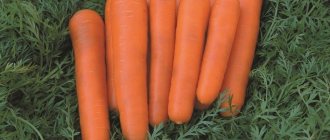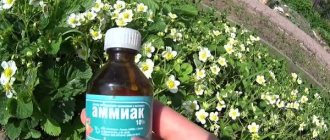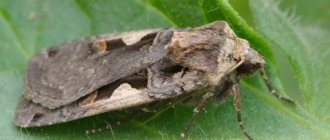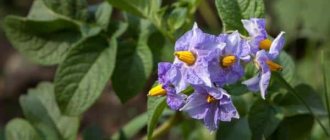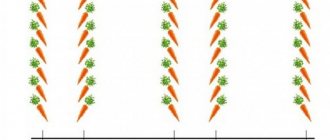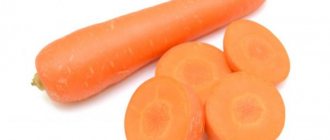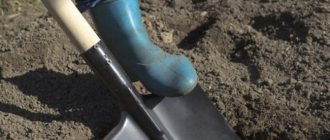Is it possible to treat with this liquid, why such weeding?
Kerosene is considered a natural herbicide and is often used by gardeners to control weeds in carrot beds. Useful properties of the liquid:
- protection and ridding of crops from weeds;
- prevention of pest attacks (mole cricket, aphid, carrot fly).
Kerosene is effective in controlling many types of weeds . But common cutter, chamomile, wild dill and horsetail are not susceptible to the harmful effects of flammable liquid.
Treating carrots with kerosene: reviews from gardeners
Ekaterina Maksimovna, Samara region: “I have been using this method for a long time. In particular, treating carrots with kerosene helps me get rid of carrot flies. The main thing is to strictly observe the proportions of kerosene for processing carrots, so as not to harm the harvest.”
Stanislav Igorevich, Moscow region: “Treating carrot seedlings with kerosene is already a proven method. It helps not only against carrot flies, but also against weeds. I have been using this method for many years, and it has never let me down. Therefore, if you are tired of fighting pests and weeds, definitely try treating carrots with kerosene.”
Processing carrots with kerosene: video
Advantages and disadvantages
| Advantages | Flaws |
|
|
Weed control
Manual weeding of beds is a tedious and thankless task. Kerosene will help speed up the process of ridding the area of unwanted vegetation.
Not all weeds can be controlled by this petroleum product, but most can be controlled.
To prepare the herbicide, a glass of kerosene is diluted in 5 liters of water. The solution is watered in the beds in dry, warm weather before the first shoots appear. After 2 weeks, the treatment is repeated.
Recent Entries
5 working ways to use tar in the garden 7 indoor plants that help you get married even in adulthood Indoor plants that can bloom in trouble
Precautionary measures
Kerosene is a flammable chemical. It is important for gardeners to strictly adhere to a number of rules. Before using the liquid, it is recommended to wear a respirator (protective mask) and gloves, and protect your eyes with goggles.
During processing, any human contact with flammable objects is prohibited: smoking is prohibited.
Other important tips:
- Keep the bottle with liquid away from direct sunlight.
- After use, tighten the container tightly, since when it interacts with air, kerosene begins to release toxic fumes.
- It is better to prepare liquid for spraying in the fresh air.
- If kerosene gets on your skin, you must immediately wash it off under running water.
Kerosene is destructive to weeds and safe for carrots . But you cannot treat with this liquid in beds where crops other than carrots grow.
Alternative methods
Experts do not recommend using hoes while the seedlings are small, otherwise you can damage the carrots themselves. But alternative options exist.
How to weed carrots with scissors
If you still don’t dare to use kerosene, then you can try this method of weeding using ordinary scissors. This is an alternative and absolutely safe option.
- You need to take either simple scissors or garden scissors.
- Trim all weeds that have reached 5 - 6 cm. Try not to leave shoots if possible, so that the weed does not grow and branch later.
- This cutting should be done regularly, preventing the grass from growing too much. This way it will not take away nutrients from the carrots.
- Cut grass can be soaked in water. The result is a wonderful organic fertilizer.
- The secret of this method is that by constantly cutting off the top part of the weed, we leave the root system without nutrition (no stems and leaves - no photosynthesis) and the weed dies.
- With the help of scissors, you can permanently get rid of thistle, milkweed, chickweed, and woodlice, which pester cultivated plants throughout the summer season.
Using salt
A fairly simple method that will enhance the effect after weeding. It is enough to take a pack of salt and pour it per square meter between the rows. Then water the beds generously until the salt is completely dissolved.
Treatment with laundry soap
You need to grate a bar of laundry soap. Then add 100 grams of vinegar and 100 grams of salt to the mixture. Mix the resulting mixture well with water. Spray the beds with the solution.
Vinegar and salt solution
For such a mixture you need to take 1 liter of boiling water, 4 tablespoons of vinegar and 2 tablespoons of salt. Mix all ingredients thoroughly. It is especially important that the salt dissolves. After this, spray the plants. This amount is enough for several square meters.
To protect carrot beds from attack by weeds, many sow radishes or lettuce in the inter-row spaces. This is a good way if you have very little land for a garden.
How to weed correctly: step-by-step instructions
Preparing for the procedure includes several important points. It is important for gardeners, and especially beginners, to strictly adhere to the existing algorithm. This is the basis for successful and safe weeding.
Inventory
You need to prepare all the necessary items in advance. On their list:
- rubber gloves;
- cotton-gauze bandage or respirator;
- container with clarified kerosene;
- watering can;
- spray.
How to dilute the liquid for irrigation and in what proportions?
Experienced gardeners can use the pure product in the following proportion: 100 ml of kerosene per m2 of land. Several methods are available for diluting the liquid.
Option 1.
- Ingredients: 5 liters of water, 250 ml of kerosene.
- Mix the ingredients, pour 50 ml of the resulting product under each carrot bush.
- The finished liquid is used for irrigation. It is more appropriate to use it to control or protect carrot seedlings from pests.
Option 2.
- Ingredients: 1 liter of water, 5 g of laundry soap, 2 liters of kerosene.
- Bring water to a boil, add soap, stir thoroughly.
- Cool the mixture to room temperature and add kerosene. The result should be a thick, cloudy liquid.
- Additionally dilute the resulting mixture with 2 liters of water.
- The product is effective both for controlling weeds in the garden and for destroying garden pests even at the stage of eggs and larvae.
Spraying process
The procedure should be carried out in dry, windless weather. The optimal time is morning or evening, since during the day active sunlight can cause burns on carrot tops. Before treating with kerosene, water the beds: the soil should be soft.
The prepared mixture should be sprayed generously, covering all seedlings . When watering, it is important that the drops are not large (the holes in the watering can nozzle should be minimal).
Our experts have prepared articles about how important it is to properly water carrots and how often it should be done, and about when to water after planting and how to do it correctly.
Composition and properties of kerosene
The chemical composition of the product depends on the composition of the oil itself from which kerosene is obtained and the method of its distillation. Kerosene contains:
- From twenty to sixty percent alifactic hydrocarbons;
- From twenty to fifty - naphthenic;
- From five to twenty-five - bicyclic aromatic;
- About two are unlimited.
This product, obtained as a result of oil refining, has a characteristic yellow tint, is used in the aviation sector as fuel, is combustible for lighting and heating elements, and is used in disinfestation and treatment of various diseases.
Gardeners are well aware that with the help of kerosene they can protect plants and fruit-bearing trees from harmful parasites and diseases.
List of alternative treatments for root crops against weeds
To combat weeds in carrot beds, you can use other folk remedies. One of the most popular and effective is table salt (1 pack per 1 m2). Pour into the spaces between the rows and pour generously until completely dissolved.
List of other alternatives:
- Laundry soap:
- Grind the block.
- Add 100 g of vinegar essence and 100 g of salt.
- Pour in 5 liters of water.
- Stir thoroughly.
- Vinegar-salt solution:
- Ingredients – 1 liter of hot water, 4 tbsp. vinegar solution, 2 tbsp. salt.
- Mix thoroughly until the salt is completely dissolved.
- Spray the weeds.
- Alcohol . Dilute with water in a ratio of 1:10. Used to water the soil.
The result is a potent drug. Ideal for cleaning paths. When controlling weeds in garden beds, apply only to the tops and leaves of weeds.
So, carrot shoots may grow poorly or slowly due to the fact that weeds dominate the garden bed. Weeding by hand or using hoes often does not bring the desired results: carrots are pulled out along with the weeds, and the fragile shoots of the crop are damaged. To make their task easier, gardeners often resort to kerosene.
This flammable liquid is an excellent way out of the situation. It is enough to dilute kerosene with water or mix with soap, and spray the resulting mixture onto the seedlings. The result is the death of weeds and safety for carrots. It is important to take safety precautions when working .
Why is weeding necessary?
It may seem that there is no need to weed an area with young seedlings. There are no carrot leaves to be seen or they are still small. You need to wait until they become visible and then clear the area of weeds. However, if you do not remove the weeds from the garden bed, they will take all the beneficial substances from the soil and prevent sunlight from reaching the young carrot leaves. As a result, the harvest will be weak, the roots will be small and bitter.
Pros of weeding:
- the plant receives more light and nutrients;
- fruits gain weight faster;
- the fruits contain more vitamins and minerals, and the roots themselves are larger.
Weeding is a mandatory type of work on the site. Weeds grow faster than garden crops. As a result, the weeds will not allow carrots to grow and root vegetables to gain weight. If you do not weed, you may be left without a harvest at all.
